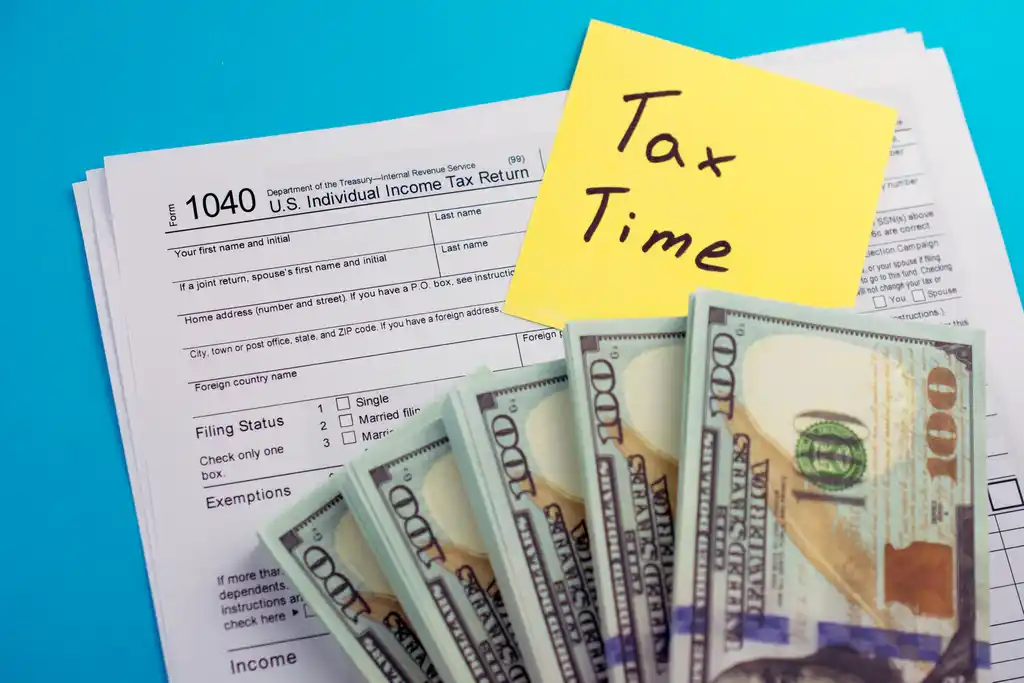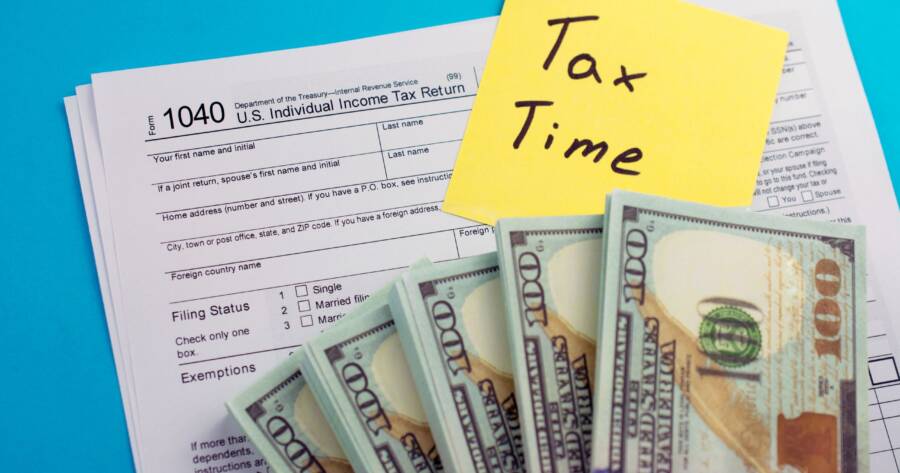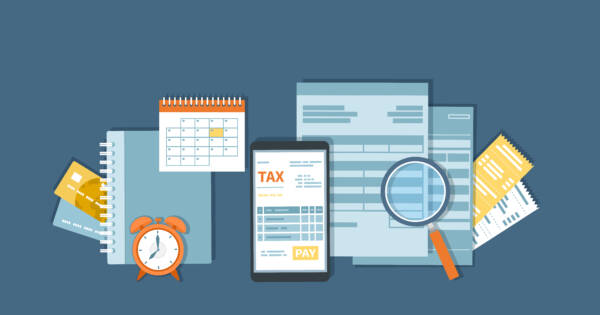Have you ever heard a friend or a co-worker complain about a recent raise or promotion, claiming that it bumped them into a new tax bracket? For some reason, these people think that they actually take home less money after taxes as a result. We’re not sure whether they are really bad at math or just simply misinformed.
Tax brackets are a bit confusing at first. However, we promise they aren’t so complicated that you can’t wrap your head around them. By the end of this article, you should know exactly what the tax brackets are and how they affect your income.
What Are Tax Brackets
If you’re reading this article, you’re probably only vaguely aware of tax brackets and how they work. You might assume that it’s as simple as “the more money I make, the more the government takes.” While that is technically true, it’s also a gross oversimplification. A tax bracket is more accurately defined as what percentage separate portions of your income will be taxed at. Still confused? Let’s keep going.
Here are the tax brackets for the 2021 tax year (or, the taxes you will file by April 15, 2022).
| Tax Rate | Single | Married (Filing Jointly) | |
|---|---|---|---|
| 10% | $0 to $9,950 | $0 to $19,900 | |
| 12% | $9,951 to $40,525 | $19,901 to $81,050 | |
| 22% | $40,526 to $86,375 | $82,051 to $172,750 | |
| 24% | $86,376 to $164,925 | $172,751 to $329,850 | |
| 32% | $164,926 to $209,425 | $328,851 to $418,850 | |
| 35% | $209,426 to $523,600 | $418,851 to $628,300 | |
| 37% | $523,601 and higher | $626,301 and higher |
For now, let’s ignore the “Married” column. The lowest tax rate is 10% and the highest is 37%. As you can see though, your annual income would have to be over $523,601 in order to get hit with that top rate. However, U.S. Census Data from 2016 shows that only nine percent of Americans have an income of over $100,000. If you want to get to the $523K mark, it drops down to one percent of Americans. To make a long story short, it probably doesn’t apply to you.
How Do Tax Brackets Work?
Here is the single most common misconception about tax brackets.
“If you make $87,000 a year, you are in the 24% tax bracket. Therefore, you pay 24% of $87,000 a year in taxes, totaling $20,880.”
That’s completely wrong. This type of thinking is why you sometimes hear people complain that a raise at work actually cost them money. We promise you, it didn’t. Here’s how it actually works.
If you’re making $87,000 per year, sticking with our example, your tax bill is actually only $14,900.42. That’s almost $6,000 less than the mistaken statement quoted above. So what gives? Let’s break it down.
Tax Pockets
Tax brackets could be more accurately described as “tax pockets.” Each pocket only holds a certain amount of income. More importantly, each pocket is taxed at a different rate. This is where the phrase “marginal tax rate” comes from. In our hypothetical scenario, here’s how the $87,000 actually gets taxed.
- The first $9,950 of income gets taxed at 10%. That equals $995.0 of taxes.
- The income from $9,951 to $40,525 gets taxed at 12%. That equals $3,668.88.
- The income from $40,526 to $86,375 gets taxed at 22%. That equals $10,086.78.
- The income from $86,376 -to the total income of $87,000 gets taxed at 24%. That equals only $149.76 more.
It’s a mistake to think that making $87,000 means you have to give 24% of your income to the government in taxes. It’s actually much less. If these numbers didn’t help you understand, try watching this excellent video from Vox. It’s a great visual teaching tool to better understand tax brackets.
Married?
Backing up, you probably noticed that the numbers are different for married couples. If you file your tax return jointly, you can actually earn more money combined before you jump up to the next tax bracket. You might have heard couples joke about only get married “for tax reasons.” However, there is some truth behind the joke. Typically, married couples can enjoy the perks a few extra tax rules that will lessen their overall burden.
In addition, married couples can now use the standard deduction of $25,100. What’s that? We haven’t said anything about deductions in this article? You’re right. Here’s how they work.
Deductions
So far things have been pretty straight forward. You earn the income, put it in the appropriate tax bracket (or pocket), and pay the assigned marginal tax rate. Now things get a bit more confusing. You can use deductions to reduce the amount of taxable income you need to claim. The standard personal deduction for 2021 tax returns is $12,950. It’s double that for married couples filing jointly.
Continuing our example of a single person making $87,000 per year, their taxes actually drop again when the personal deduction is applied. Their total taxable income drops to $74,050. That means they won’t actually even hit the 24% tax bracket. Their tax owed is now actually $12,016.16.
- The first $9,950 of income gets taxed at 10%. That equals $950 of taxes.
- The income from $9,951 to $40,525 gets taxed at 12%. That equals $3668.88.
- The income from $40,426 to $74,050 gets taxed at 22%. That equals $7,397.28.50.
Their new tax bill is only 13.8% of their overall $87,000 income. So why do people keep insisting they are “in the 24% tax bracket” when that’s clearly not true? We’re not sure.
There are a bunch of other deductions you can use to also reduce your taxable income, if you qualify. The most commons ones are medical expenses, state tax, property tax, and charitable contributions. For more information on tax deductions, check out this article. Note that if you choose to itemize your deductions separately, you cannot still claim the standard personal deduction too. You have to choose one or the other, but not both.
Exceptions
There are extremely rare cases where making more money can actually cost you. However, it won’t be from higher income taxes. For individuals or families with low incomes, there’s a good chance you can take advantage of various government subsidy programs. Whether they come in the form of affordable housing, food stamps, or daycare funds, these programs are extremely helpful to anyone who qualifies.
However, these programs typically use your gross income levels to determine how much assistance you or your family qualify for. If your income rises, you could lose access to some of these programs. The result is that you’ll have to pay for these things out of your own pocket. Hopefully your income has risen enough to actually do so. However, there are rare cases where your income can rise juuuuuust enough to disqualify you from these welfare programs, but not enough to offset your new costs of paying for everything yourself. If you find yourself in this situation, it’s time to buckle down and budget hard.
Tax Rates vs. Tax Brackets
You might think the terms “Tax Rate” and “Tax Bracket” are interchangeable. Although they sound similar, there’s a small but important difference between the two. We’ve already defined tax brackets for you, but tax rates are something else altogether. Each bracket has its own tax rate, as outlined in the above table. This is known as a “marginal tax rate.” Since different portions of your income are taxed at different rates, it takes a bit of math to determine what is known as your “effective tax rate.”
Let’s go back to our example of someone who made $87,000 in 2021. After standard deductions, they only paid 13.8% of their income in taxes. That’s their effective tax rate. It doesn’t matter that a small portion of their income was taxed at 22%. Your effective tax rate should always be lower than your highest marginal tax rate.
Earned Income Tax Credit
The Earned Income Tax Credit (EITC) is a special credit designed to help low-to-middle income individuals and families. It will effectively lower your tax liability, leaving you with more of your money to provide for your family. Although it can provide minimal help to childless individuals, it’s really designed for families.
The amount of the credit varies, depending on your income and the number of eligible dependent children you have. You can check the IRS page about the EITC for more information. There’s also an online assistant to find out if you are eligible and how much the EITC might be for your individual taxes. If you can use the EITC, it might ultimately have you paying a lower percentage of your gross income in taxes. And that’s a good thing.
Pros and Cons of Tax Brackets
There are many different economic theories and models about the best way to tax citizens. The two most common are a progressive tax system — which tax brackets are included in — and a flat tax rate. (In a flat tax rate system, everyone is taxed at the same rate regardless of income.) Every tax system has pros and cons, supporters and detractors. Let’s take a quick glace at why tax brackets can be both good and bad.
Pros
- Those with lower incomes pay less taxes, leaving them more money to pay for basics.
- High income earners can afford the higher taxes without negatively affecting their lifestyles.
- Deductions and credits can give everyone (but especially higher earning individuals) some relief, while rewarding good behavior — like donating to charity or investing in environmentally friendly home upgrades or vehicles.
Cons
- Wealthy people often end up paying much more in taxes. (Although some will argue this is a feature, not a bug.)
- Many high income earners strive to find as many loopholes as possible in order to reduce the taxes they owe. This leads to things like hidden income, shell companies, and offshore accounts.
- Tax brackets can lead to reduced personal savings, since earning more money also means having to pay more taxes.
Corporate Taxes
While this article focuses primarily on personal tax brackets, corporate taxes are a different story. They are currently taxed at a flat rate of 21%. Like personal taxes, however, there are plenty of deductions, credits, loopholes, and subsidies that companies can use to lower their tax liability. Some companies will even relocate their headquarters to a country that is notoriously lax on taxes, in an attempt to avoid paying the higher American tax rate.
In some cases, you can register a company as an S corporation. This is done to avoid double taxation. An S corporation doesn’t pay corporate tax. Instead, it passes the income on to the business owners, who are taxed through their individual tax returns. One high profile example of this is the NFL, the largest sports league in the United States. The NFL as an organization doesn’t make any money. Instead, the profit is distributed to the 32 team owners. In turn, they have to include that income on their own tax returns. Some of the NFL teams are owned by holding companies, which further muddies the water. However, the NFL is a basic example.
What About Really High Tax Brackets?
You may have seen politicians bickering over tax brackets on Twitter, CNN, or Fox News. Republicans often warn that Democrats want to “raise taxes to over 50%” in an effort to scare voters. It’s not that simple. As you already learned from reading this article, the top tax bracket is currently 37%. And it only applies to those making more than $523,600 per year. Again, that’s about one percent of Americans.
When Democratic politicians talk about raising taxes, they are usually talking about the ultra rich. They basically want to add a few more “tax pockets” to the list. That means that income over a million dollars might get taxed at 42%, for example. Or income over ten million dollars being taxed at 50% or higher. Some left-leaning politicians have claimed that any income over $10 million should be taxed at up to 70%.
Again, this would not change the marginal tax brackets for 99.9% of Americans. Whether you believe that millionaires and billionaires paying more is “fair” or not is a matter of personal politics. Regardless of what you believe, we hope this article shed some light on an often confusing topic. Oh, and be sure to vote.
The Bottom Line
Hopefully by now, you realize that the term “tax brackets” isn’t really accurate. It’s not as simple as saying “earning $100,000 means you have to pay 24% in taxes.” There’s more nuance to it than that. Those who only earn a little bit of money each year are taxed at a fairly low rate. On the other hand, the more you earn, the bigger chunk Uncle Sam will claim as its own. While you can’t avoid taxes entirely (without breaking the law), there are steps you can take to pay less.
Do some research on tax deductions and credits that you may be eligible for. If it all seems very confusing, go ahead and seek the help of a professional accountant or tax attorney. They can help you come up with a plan to reduce your tax liability as much as legally possible.
 Shutterstock
Shutterstock







